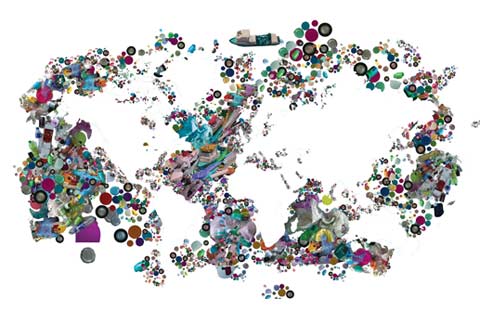Chinese scientists make chromatin breakthrough
Updated: 2014-05-07 09:24
By Cheng Yingqi (China Daily)
|
|||||||||||
The success in imaging the structure is thanks to the application of a technology called cryo-electron microscopy.
"Cryo-electron microscopy has been used more and more in structural biology in recent years, with its advantage on imaging the extraordinarily large size of the molecules," says Zhu Ping, a professor at the Institute of Biophysics at the Chinese Academy of Sciences, who led a team focused on 3D reconstruction and structural analysis in the research.
According to Zhu, traditional methods of imaging supramolecular structures were mainly constrained by the fact that it was extremely difficult to crystallize molecules of such large size.
The cryo-electron microscopy, however, can capture clear 3D images of the molecules without the crystallization process.
The Chinese Academy of Sciences invested 40 million yuan ($6.4 million) in a world-leading cryo - electron microscope, Titan Krios, in 2010.
The microscope, along with other cutting-edge devices, is part of a 100-million yuan protein science research platform that began in 2004 and has been open to all research teams in the Chinese Academy of Sciences.
"Of course we have international competitors who are also imaging the 30-nanometer fiber with similar devices. The reason that we are the first to succeed is that we had the right combination of talent," Zhu says.
"For example, I am good at 3-D reconstruction and structural analysis but I cannot produce a sample of 30-nanometer fiber, which professor Li Guohong is good at.
"As our three teams under the academy were working without reservation, we have advantages over researchers who were working alone."
Related: Layered oceans suspected on Jupiter moon
Dental routine of early man revealed
Related Stories
Scientist focuses on smog and micro-world 2014-04-12 11:09
Scientists doubt saturated acids add heart disease risk 2014-03-20 15:35
Quest for speed drives top quantum scientist 2014-01-29 08:47
Chinese, German scientists discover world’s oldest cheese 2014-03-12 14:24
Scientists call for action on cutting sugar 2013-12-11 09:49
Today's Top News
Ukraine moves special forces to Odessa
Slovenian PM resigns
Disclosure of military secrets becoming bigger risk
China, AU to deepen co-op
UN hosts China Shanxi Food Festival
Chinese Parents: For some, it's 'Harvard, Harvard'
Japanese writer Junichi Watanabe dies at 80
Vietnamese veteran reminisces victory in the Battle of Dien Bien Phu
Hot Topics
Lunar probe , China growth forecasts, Emission rules get tougher, China seen through 'colored lens', International board,
Editor's Picks

|

|

|

|

|

|





